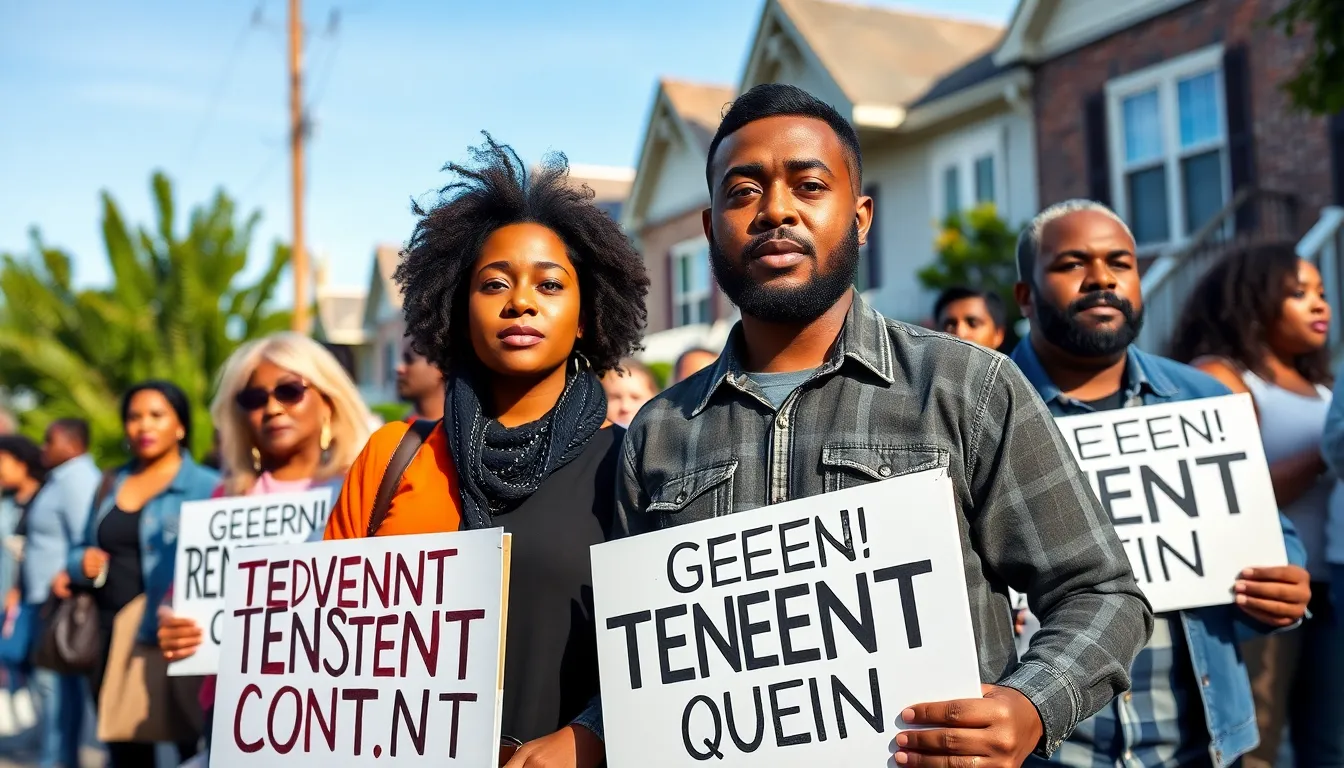Table of Contents
ToggleWhen it comes to living in a rental, tenants often feel like they’re at the mercy of their landlords. But what if they had the power to change that? Enter the tenant right to organize—a superhero move that empowers renters to band together and tackle issues like rent hikes and maintenance woes. It’s like forming a union but with fewer hard hats and more coffee breaks.
In a world where landlords might think they’re running a one-person show, tenants can unite to amplify their voices and negotiate better living conditions. This isn’t just about keeping the heat on during winter; it’s about creating a community where everyone feels heard and valued. So, grab your besties and your lease agreements, because it’s time to dive into the nitty-gritty of tenant rights and discover how organizing can turn a rental into a thriving home sweet home.
Overview of Tenant Right to Organize
Tenant right to organize allows renters to unite and address common concerns like rent hikes and maintenance issues. This collective effort enhances their negotiating power, fostering a stronger community focused on mutual support.
Definition and Importance
Tenant right to organize refers to the legal ability of renters to band together to negotiate terms with landlords and property managers. This right is critical for empowering tenants to voice their concerns and advocate for fair treatment. Organizing can lead to collective bargaining, improving living conditions and addressing grievances. In many regions, laws protect this right, ensuring tenants can meet, discuss issues, and seek solutions without fear of retribution. Ultimately, it cultivates a sense of solidarity and promotes affordable housing.
Historical Context
Historically, tenants have faced significant challenges in asserting their rights. The tenant rights movement gained momentum in the mid-20th century as housing shortages and rising rents created widespread dissatisfaction. Organizations began forming nationwide to advocate for tenant rights and the right to organize. In response, many jurisdictions enacted protections for tenants to support their ability to assemble and negotiate with landlords. This development marked a turning point, reinforcing tenants’ roles in the housing system and highlighting the need for equitable housing policies. The progress made illustrates the impact of organized efforts on tenant rights and community advocacy.
Legal Framework
Tenant rights to organize fall under a combination of federal and state laws that offer protections for renters. Understanding this legal landscape is crucial for empowering tenants.
Federal Laws
The National Labor Relations Act grants workers the right to organize, and this framework extends to tenants in some jurisdictions. Tenants may engage in collective actions like forming associations or negotiating with landlords for better conditions. Fair Housing Act also serves as a protective measure against discrimination, ensuring that tenants who organize cannot be retaliated against due to their collective activities. This federal support creates a foundation for tenant organizing by recognizing their rights to pursue collective interests.
State Laws
Each state has its own laws addressing tenant organizing, often providing additional protections beyond federal guidelines. Many states recognize tenants’ rights to join together to negotiate issues like rent control or maintenance standards. Renters in California, for example, benefit from specific legislation that supports collective bargaining rights, while states like New York have robust tenant union frameworks. Legal protections against landlord retaliation for organizing activities vary, meaning state-specific regulations often play a significant role in safeguarding tenant rights.
Benefits of Tenant Organizing
Tenant organizing provides numerous advantages that strengthen a renter’s position within the housing system. Collaborating fosters community resilience and enhances the ability to achieve favorable outcomes.
Improved Living Conditions
Organizing leads to significant improvements in living conditions. Tenants often report a better response to maintenance requests when they present issues collectively. Problems such as inadequate heating, water leaks, and pest infestations receive more attention through organized efforts. Communities that unite to address these concerns often experience prompt action from landlords. Additionally, organized tenants can advocate for better amenities and safer environments, contributing to an overall enhancement in quality of life.
Enhanced Negotiating Power
Negotiating as a unified group greatly increases power during discussions with landlords. Collective bargaining allows tenants to articulate their needs effectively and push for important changes. Groups that advocate together can secure favorable lease terms, decrease rent increases, or improve maintenance standards more successfully. Landlords often respond to organized tenants more seriously, recognizing their substantial influence. Enhanced negotiating power not only secures immediate benefits but also establishes a precedent for future renters.
Challenges Faced by Tenant Organizations
Tenant organizations encounter various challenges that can hinder their effectiveness. Legal obstacles often arise, complicating the ability of tenants to organize and advocate for their rights.
Legal Obstacles
Complex legal frameworks can obstruct tenant organizing efforts. Some jurisdictions lack clear protections for tenant associations, leading to confusion about their rights. Inconsistent state laws further complicate the landscape, as tenants may not fully understand their legal standing. Additionally, local regulations sometimes limit the ability to form unions or collective bargaining groups. This uncertainty can create hesitance among renters eager to organize. Organizing requires navigating these legal intricacies, making it crucial for tenants to seek comprehensive knowledge of applicable laws.
Resistance from Landlords
Landlords often resist tenant organizing, seeing it as a threat to their authority. Many property owners may react defensively to tenant associations, claiming they undermine their management. Some landlords deploy intimidation tactics to deter tenants from organizing, including retaliatory eviction threats or inaccurate lease enforcement. This resistance creates an adversarial environment that can discourage renters from asserting their rights. Furthermore, landlords might pressure tenants to abandon collective actions, prioritizing their interests over tenants’. Understanding this resistance allows tenant organizations to strategize effectively against these challenges.
Successful Case Studies
Various successful tenant organizing efforts highlight the effectiveness of collective action. These case studies provide valuable insights into strategies employed by tenants to improve living conditions and assert their rights.
Notable Tenant Organizing Efforts
Notable cases demonstrate how tenants have effectively united to advocate for their rights. In Los Angeles, the Tenants Together network mobilized renters to combat excessive rent increases, leading to the establishment of stronger rent control measures. Similarly, in New York City, the Tenants Union successfully challenged a major landlord accused of harassment. This coalition organized tenant meetings, which united residents against the landlord’s tactics and resulted in increased protections against eviction.
Impact on Communities
Organizing positively impacts communities, fostering solidarity among renters. Collective efforts often lead to enhanced communication, creating a support network for residents. In Seattle, organized tenants successfully negotiated for better maintenance standards, which significantly improved overall living conditions. Communities where tenants organize report increased civic engagement, leading to further advocacy for housing policies that benefit all renters. As tenant groups gain momentum, they stimulate broader discussions on housing equity, ultimately shaping local policies.
Conclusion
Tenant organizing represents a powerful tool for renters seeking to improve their living conditions and assert their rights. By coming together, tenants can amplify their voices and negotiate effectively with landlords. This collective action not only fosters a sense of community but also sets the stage for future renters to benefit from stronger protections and improved housing policies.
Despite the challenges that may arise, the successes of various tenant organizations highlight the potential for meaningful change. As awareness of tenant rights continues to grow, so does the opportunity for renters to secure a fairer and more equitable housing landscape. Ultimately, the right to organize is not just about immediate gains; it’s about building a sustainable movement for the future.








